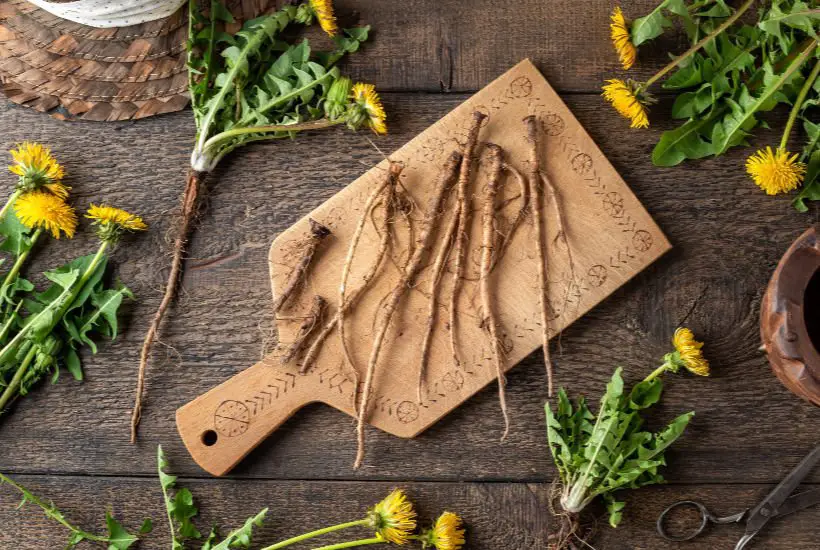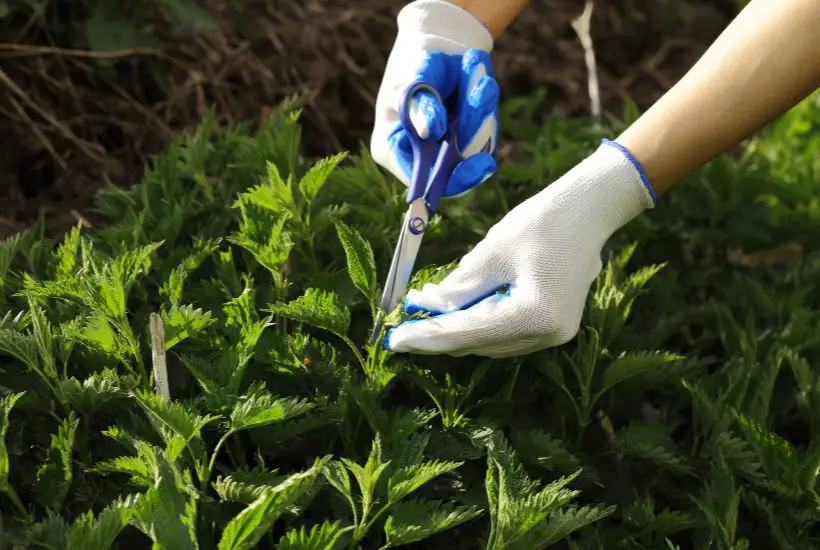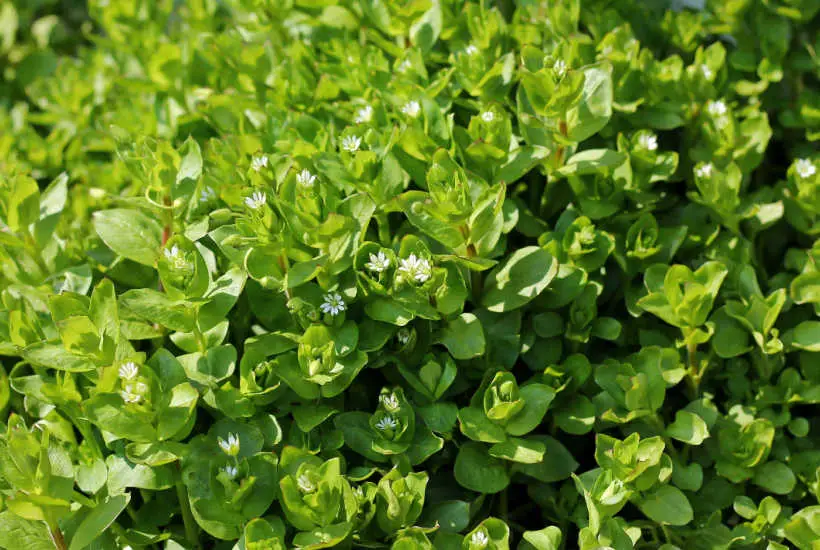January is usually very cold and opportunities for foraging are not as good as in the summer or autumn.
There are usually still few sloes or rosehips around, but fresh plants are fairly scarce. It’s still beautiful to go out on a sunny day and if you are lucky you will find some chickweed, sorrel or nettle to pick.
January foraging also overlaps with December and February, so make sure you check out my other posts to see what’s in season.
To get you started

Cow Parsley (Wild Chervil)
Cow parsley can be easily found on river banks, roadsides and meadows. The leaves are at their best before the plant starts to flower, which is any time before March.
The only problem is that cow parsley leaves look very similar to poisonous hemlock, so make sure you have a good identification book with you when you go foraging.

What to pick
- January – March – leaves
- April – May – Shoots
notes
Leaves are best collected (and more tasty) before the plant starts to flower.
how to use
Mix in salads and wherever you would normally use parsley
Recipes

dandelion roots
I’m sure I don’t need to introduce you to dandelion – the bright yellow flower that’s abundant on all meadows in the late spring and summer. But winter is the best time to dig for dandelion roots, which are great for roasting and making coffee.
The reason why winter is the best time to pick dandelion roots is because the plant draws all it’s energy and nutrition to the root to be ready to start growing in the spring.
You can easily spot where to dig if you just look for the dandelion leaves. The root is quite strong and long, so it’s best to take a little garden trowel or weeding tool.

What to pick
- Dandelion root
notes
how to use
Clean, dry and roast into a natural coffee.
Recipes
- Where to find them: Dandelion roots can be found wherever dandelion plants grow – in lawns, parks, gardens, meadows, and at the side of roads. They are widespread and common across most of the UK.
- When to harvest: The best time to harvest dandelion roots is in late fall through early spring when the plants have sent their energy down into the taproot for winter storage. The roots are less bitter during this time.
- How to harvest: Use a garden fork to loosen the soil around the taproot and pull the entire plant up. Then trim off the leaves and cut off the taproot. The root can grow quite long.
- How to use them: Dandelion roots have a bitter, earthy flavor. They can be roasted and used as a coffee substitute or added to stews and soups. The raw roots can be sliced and added to salads. They can also be dried and ground into powder to use as a tea or supplement. The roots are high in inulin, a prebiotic fiber.
- Other uses: Dandelion root tea may act as a diuretic. Some studies show it can improve digestion and have detoxifying effects for the liver. More research is still needed on these
Black mustard
Black mustard is similar to yellow mustard, but it has darker stems and leaves. The seeds are black and have a peppery taste to them.
You can find black mustard in the meadows, sides of open spaces or parks and most scrublands. You’ll probably not find the plant by it’s flowers, so instead look for pods filled with black seeds.

What to pick
- Leaves
- Black seeds
notes
how to use
Use in salads to add a peppery taste to them or spice up your cooking.
Recipes
Cattail
Found growing in and around ponds and stagnant water, cattail is easily recognised with it’s brown, thick ‘cigars’ like tops.
Make sure that you ask permission of the land or pond owner before you pick any cattail. Or you can ask if any of your friends have some in their garden as many people keep it as ornamental plant to decorate the sides of their water features or small ponds.

What to pick
- white parts towards the bottom (lower) part of the plant
- Roots or rhisons
notes
Pull out the plant and use the white parts at the bottom as a ‘leeks’ in recipes and the roots (or risons) for making flour
how to use
Recipes
Monthly wild food calendar
Three cornered leeks
- Where to find them: Three cornered leeks, also known as wild garlic, can be found growing in woodlands, hedgerows, roadsides, churchyards and gardens across the UK. They prefer shady, moist areas and they are widespread across England and Wales.
- What to pick: Harvest the leaves, flowers and bulbs. The long, triangular leaves have a distinctive garlic scent when crushed. The flowers bloom in spring and the small bulbs can be dug up year-round.
- How to use them: The leaves and flowers have a mild garlic flavor and can be used raw in salads, pesto or as a garnish. The bulbs can be pickled, used in soups or sautéd as a vegetable. The bulbs get stronger in flavor after curing. Follow foraging ethics when harvesting.

Sow thistle
- Where to find it: Sow thistle grows widely in many different habitats including gardens, roadsides, fields, waste grounds and hedgerows. It is found throughout the UK and is considered an invasive weed in some areas.
- What to pick: The young leaves can be picked and eaten raw or cooked. Choose leaves before the plant flowers for the best flavor. The stems, flowers and roots are also edible but more bitter.
- How to use it: The leaves have a flavor similar to lettuce but with a slightly bitter taste. They can be added raw to salads, sandwiches, wraps and tacos. The leaves can also be cooked like spinach or used in soups and stews. They get more bitter with age so use young leaves.
- Other uses: Sow thistle has been used traditionally as a medicinal herb. The milky sap was used to treat warts. The leaves were made into a tea or poultice for inflammatory ailments. The root was used as a diuretic. However, there is limited scientific evidence to support these medicinal uses.
- Identification: Sow thistle has spiny, deeply lobed leaves with white veins and milky sap. The flower buds look similar to dandelions but sow thistle has many small yellow flowers on branched stems.

Common Nettles
- Where to find it: Common nettle grows in abundance across the UK. It thrives in nitrogen-rich soils and is commonly found along hedgerows, stream banks, around barns, in gardens and disturbed sites.
- What to pick: The young leaves and shoots can be picked before the plant flowers in spring. Choose the top 4-6 leaves from each plant. Wear gloves and long sleeves to avoid getting stung. The leaves get bitter with age so select young growth.
- How to use it: Nettle has a flavor similar to spinach when cooked. The leaves can be blanched, sautéed, or added to soups, pesto, pizza, pasta, etc. Nettle is high in iron, vitamin C and other nutrients.
- Drying/freezing: Nettle can be dried or frozen for later use. Blanch leaves before drying or freezing to remove the sting. The dried leaves make a nourishing tea.
- Other uses: Nettle has been used traditionally as a medicinal plant to treat joint pain, gout, anemia and urinary issues. Recent research shows nettle may reduce inflammation and enlargement of the prostate. More studies are needed on its efficacy.
- Identification: Look for toothed, heart-shaped leaves with pointed tips. The underside of leaves and stems have stinging hairs. Clusters of small green leaves

Chickweed
- Where to find it: Chickweed is abundant and widespread across the UK. It grows in gardens, farmlands, disturbed ground, woodlands, hedgerows, and roadsides. It prefers moist, nutrient-rich soils.
- When to harvest: Chickweed can be foraged all year round but is best harvested in spring and early summer when the plants are young and tender.
- What to pick: The leaves, stems, flowers and buds are all edible. Pick the younger top parts of the plant. Older growth becomes stringy and tough.
- How to harvest: Chickweed stems are delicate. Gently pick leaves and stems with your fingers rather than cutting. Don’t pull up the whole plant, leave the roots so it regrows.
- How to use it: Chickweed has a refreshing, mild flavor. The leaves and stems can be eaten raw in salads. It can also be lightly cooked as a green vegetable like spinach. Chickweed is high in vitamins and minerals.
- Other uses: Chickweed is used in herbal medicine to treat skin irritations and joint pain when applied topically as an infused oil, ointment or poultice. There is some scientific evidence for its anti-inflammatory effects.
- Identification: Chickweed has small white star-shaped flowers with five petals. The oval leaves are arranged in pairs along the succulent, creeping stems.
Cleavers (goosegrass)
- Where to find it: Cleavers is a common weed found throughout the UK. It grows in hedgerows, along stream banks, in gardens, farms, disturbed ground and woodland areas.
- When to harvest: The best time to harvest cleavers is in early spring before it flowers and sets seed. Late spring and early summer is also fine.
- What to pick: The young, green stems and leaves are edible. Avoid picking once the stems become thick and fibrous.
- How to harvest: Gently pluck the young shoots, leaves and stems by hand. Don’t uproot the plant so it continues to grow.
- How to use it: Cleavers has a fresh, grassy taste when young. It can be eaten raw in salads and sandwiches or lightly cooked as a vegetable. It’s also used for teas and herbal infusions.
- Storage: Cleavers doesn’t store well and is best eaten immediately. It can also be blanched and frozen for later use.
- Identification: Cleavers has whorls of thin, sprawling stems with small goosefoot-shaped leaves. The stems have tiny hooked hairs that cling to fabric and animal fur.
- Medicinal uses: Traditionally used as a spring tonic, diuretic, and to treat skin conditions
Other plants that are also in season in January
This blog post was originally written on 23 December 2020 and last updated on 4 February 2024

Leave a Reply